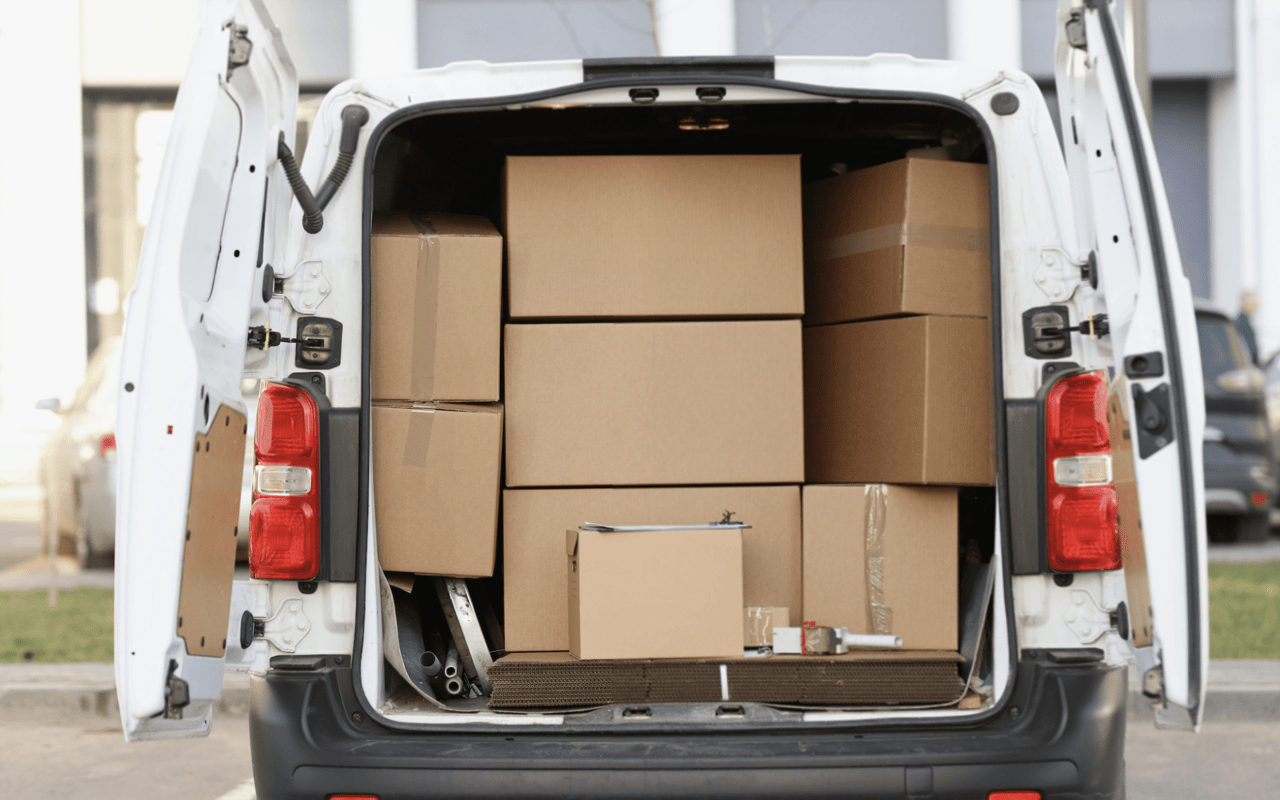Moving is a big task, and when pets are part of the family, the process involves unique challenges. Pets are sensitive to changes in their environment, and even minor disruptions can cause them stress. Planning ahead and following strategies tailored to pets can make the transition smoother for everyone. In this post, we’ll explore key tips to help you prepare, transport, and settle your pets into their new home comfortably.
Prepare Ahead for a Smooth Transition
A successful move with pets begins with preparation. Start by gathering all necessary documents, including veterinary records, vaccination certificates, and any required permits if you’re moving across state or country lines. Also, research local pet regulations and pet-friendly policies if you’re moving into an apartment or rental. If your pet isn’t microchipped, consider doing so before the move, or make sure their tags and information are up to date. These small steps can make a big difference in ensuring your pet’s safety during the move.
Additionally, make a checklist of items your pet will need during the transition, such as food, treats, water, toys, and bedding. Keeping their essentials readily accessible can reduce stress for both you and your pet on moving day. Consider packing a “pet survival kit” with enough supplies to last for the first few days in your new home, so you won’t have to scramble for items when you’re busy unpacking.
Additionally, make a checklist of items your pet will need during the transition, such as food, treats, water, toys, and bedding. Keeping their essentials readily accessible can reduce stress for both you and your pet on moving day. Consider packing a “pet survival kit” with enough supplies to last for the first few days in your new home, so you won’t have to scramble for items when you’re busy unpacking.
Keep Your Pet’s Routine Consistent
Pets thrive on routine, so try to maintain their usual schedule as much as possible leading up to the move. Feed them at the same times, keep regular exercise routines, and maintain any daily rituals that bring them comfort. A familiar routine will help reduce anxiety and let them know that, despite the changes happening around them, they still have a sense of normalcy.
On the day of the move, it can be beneficial to give pets a long walk or extra playtime to help burn off energy and manage stress. For cats or smaller pets that don’t go outside as often, consider setting aside some time to engage them in activities they enjoy, like playing with their favorite toy or giving them a treat puzzle.
On the day of the move, it can be beneficial to give pets a long walk or extra playtime to help burn off energy and manage stress. For cats or smaller pets that don’t go outside as often, consider setting aside some time to engage them in activities they enjoy, like playing with their favorite toy or giving them a treat puzzle.
Make Travel Plans Pet-Friendly
How you plan to transport your pet can significantly impact their comfort during the move. If you're moving locally, a car ride may be simple enough, but for longer moves, consider how best to keep your pet safe and comfortable. Start by choosing an appropriate travel carrier. Ensure it is well-ventilated, spacious, and secure, and let your pet get accustomed to it well before moving day. Place familiar items like a blanket or toy inside to provide them with a sense of security.
For pets that aren’t used to car rides, try to take them on shorter trips leading up to the move to help them get accustomed to the experience. If you’re flying, check airline regulations for pet travel well in advance. Some airlines have specific requirements for carriers and health certificates, so make sure all documents and equipment are in order to avoid last-minute issues.
For pets that aren’t used to car rides, try to take them on shorter trips leading up to the move to help them get accustomed to the experience. If you’re flying, check airline regulations for pet travel well in advance. Some airlines have specific requirements for carriers and health certificates, so make sure all documents and equipment are in order to avoid last-minute issues.
Plan for Moving Day Safety
Moving day can be chaotic, with open doors, unfamiliar movers, and loud noises. To keep pets safe and prevent them from running away, consider designating a quiet room or a secure area in your current home where they can stay during the hustle and bustle. Add a “Do Not Enter” sign to the door to remind anyone helping you move to keep it closed.
Alternatively, if your pet is comfortable staying with a friend or family member for the day, this can reduce their exposure to the stress of the move. Boarding facilities can also be an option, but make sure it’s a place your pet is familiar with, or take them for a few short visits beforehand. These measures ensure that your pet remains safe and calm during the busiest part of the move.
Alternatively, if your pet is comfortable staying with a friend or family member for the day, this can reduce their exposure to the stress of the move. Boarding facilities can also be an option, but make sure it’s a place your pet is familiar with, or take them for a few short visits beforehand. These measures ensure that your pet remains safe and calm during the busiest part of the move.
Introduce Your Pet to the New Home Gradually
Once you arrive at your new home, give your pet time to adjust to the unfamiliar surroundings. Begin by introducing them to one room at a time, ideally starting with a space that includes their bedding, toys, and familiar scents. Gradual exposure to the rest of the house can prevent them from feeling overwhelmed. For cats and other animals sensitive to territory, confining them to a single room initially and gradually expanding their access can make the adjustment process easier.
Make sure to pet-proof the new home by securing loose wires, removing potentially toxic plants, and checking for any small spaces they could get stuck in. Doing this will create a safe environment where your pet can explore freely without risk.
Make sure to pet-proof the new home by securing loose wires, removing potentially toxic plants, and checking for any small spaces they could get stuck in. Doing this will create a safe environment where your pet can explore freely without risk.
Reinforce Comfort and Familiarity
To help your pet feel more at ease, surround them with familiar items such as their favorite bed, blanket, toys, or even a piece of clothing with your scent. These items act as comforting reminders of their old environment, easing their transition into the new space. Try to maintain consistency with their mealtime and walk schedule in the new home, as familiar routines provide reassurance that they are safe and cared for.
If you notice signs of stress—such as hiding, decreased appetite, or unusual behavior—give your pet some time to adjust. Offer gentle reassurance and avoid forcing them into new areas of the home too quickly. Patience and positive reinforcement go a long way in helping them settle.
If you notice signs of stress—such as hiding, decreased appetite, or unusual behavior—give your pet some time to adjust. Offer gentle reassurance and avoid forcing them into new areas of the home too quickly. Patience and positive reinforcement go a long way in helping them settle.
Monitor Their Health and Behavior
Pets can sometimes experience physical symptoms of stress, such as digestive issues, excessive grooming, or lethargy. Monitor your pet’s health closely in the days following the move, and be mindful of any significant behavioral changes. If any issues persist, it may be worth visiting a veterinarian to rule out any health concerns or discuss ways to manage their anxiety.
Consider using natural calming aids, such as pheromone diffusers or sprays, which can create a calming atmosphere and alleviate some of the stress associated with a new environment. Always consult your vet before using any supplements or calming products, especially if your pet has health concerns.
Consider using natural calming aids, such as pheromone diffusers or sprays, which can create a calming atmosphere and alleviate some of the stress associated with a new environment. Always consult your vet before using any supplements or calming products, especially if your pet has health concerns.
Explore the New Neighborhood Together
Helping your pet get familiar with the new neighborhood can be a bonding and confidence-building experience. For dogs, take them on daily walks to explore the area gradually. Introduce them to nearby parks or walking trails and give them time to get accustomed to the new sights and smells. For outdoor cats, keep them indoors for at least a couple of weeks before letting them outside, allowing them to become familiar with the house as their new base.
If you’ve moved to a community with other pets or pet-friendly spaces, take time to introduce your pet to these places gradually. Building positive experiences in the neighborhood can help them feel more at home and reduce any remaining anxiety from the move.
If you’ve moved to a community with other pets or pet-friendly spaces, take time to introduce your pet to these places gradually. Building positive experiences in the neighborhood can help them feel more at home and reduce any remaining anxiety from the move.
Create a Long-Term Comfort Plan
The settling-in process can take time, so be patient with your pet as they adjust to the new environment. Keep their routine as consistent as possible, and offer plenty of positive reinforcement. For pets particularly sensitive to change, consider establishing a long-term comfort plan. This might involve providing extra playtime, setting up a cozy retreat area in your home, or incorporating soothing activities like grooming or snuggle sessions.
If your pet struggles with anxiety or behavior issues after the move, you might want to consult with an animal behaviorist or your veterinarian. With time, care, and understanding, your pet will begin to feel at home in their new space, giving everyone a fresh start in a new environment.
Moving with pets requires planning, patience, and a bit of extra effort, but a smooth transition is possible with the right approach. By preparing in advance, keeping your pet’s needs in mind, and creating a supportive environment, you can help your pet feel comfortable and secure through every stage of the move. As your pet adjusts to their new home, you’ll both be able to enjoy this new chapter with confidence and a sense of excitement.
Fine Homes & Estates + Waterfront Homes NJ is a distinguished realty group specializing in luxury properties and waterfront residences across New Jersey. With a commitment to excellence and a reputation for unparalleled service, they bring decades of experience and expertise to every transaction.
For inquiries and consultations, visit their website to get in touch. Check out stunning homes in Brigantine!
If your pet struggles with anxiety or behavior issues after the move, you might want to consult with an animal behaviorist or your veterinarian. With time, care, and understanding, your pet will begin to feel at home in their new space, giving everyone a fresh start in a new environment.
Moving with pets requires planning, patience, and a bit of extra effort, but a smooth transition is possible with the right approach. By preparing in advance, keeping your pet’s needs in mind, and creating a supportive environment, you can help your pet feel comfortable and secure through every stage of the move. As your pet adjusts to their new home, you’ll both be able to enjoy this new chapter with confidence and a sense of excitement.
Fine Homes & Estates + Waterfront Homes NJ is a distinguished realty group specializing in luxury properties and waterfront residences across New Jersey. With a commitment to excellence and a reputation for unparalleled service, they bring decades of experience and expertise to every transaction.
For inquiries and consultations, visit their website to get in touch. Check out stunning homes in Brigantine!



